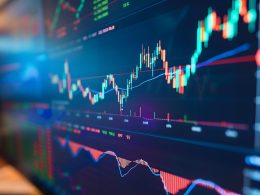by Joseph V. Amato, President and Chief Investment Officer—Equities, Neuberger Berman
Over the next couple of weeks, many of us who live in Europe and the Americas will be marking six months since we abandoned our offices and started working from home under the coronavirus lockdown.
As if that weren’t enough to confirm the unusual nature of 2020, we now know that the second quarter was the worst on record for U.S. GDP growth. Yet, even as that data came out, the S&P 500 and Nasdaq indices each set a new high, the latter now up by around one-third, year-to-date.
A new bout of volatility late last week has investors asking: Is the market going to come back to the real world or is the real world going to catch up with the market?
History and Destiny
History might be cause for concern. September and October have tended to be the weakest months for U.S. equities. Although November 1929 and April 1932 are the two worst months for the S&P 500 since 1900, October has suffered the largest number of double-digit losses (in eight years out of 121). September comes next. The average October return since 1900 has been -0.29%. The worst days of the 2008 – 09 financial crisis, Black Monday of 1987 and the Banking Crisis of 1907 all fell in Octobers past.
Fall lives up to its name in financial markets, and while history isn’t destiny, this fall promises more than its fair share of hazards.
Even before we get the results of the U.S. general elections, U.S. politics could unsettle markets. Facing a $1 trillion chasm in their negotiating positions, Democrats and Republicans may fail to deliver a new fiscal stimulus. The impending government shutdown at the end of this month will only add to the complexity and rancor.
Elsewhere, Japan is set for some leadership uncertainty after a long period of stability and progress under Prime Minister Shinzo Abe; while an October deadline looms for post-Brexit trade talks, currently snagged on the thorny issues of state aid, regulatory alignment and fishing rights.
Long-Term Impact
Lest we forget, coronavirus is still with us.
Summer already brought us a second wave of infections as lockdown restrictions were eased. The next big potential contagion events are pretty clear: K-12 schools and universities reopening, more people returning to their workplaces, colder weather and, in the U.S., the interstate holiday travel associated with Thanksgiving and Christmas. At the same time, progress on vaccines and antiviral treatments provide upside for the economy and markets.
In addition to the health situation, as workers’ furlough periods come to an end, we may also begin to appreciate the scale of the long-term impact this crisis will have on jobs, as opposed to the temporary shock. Persistently high U.S. initial jobless claims and recent consumer cutbacks on groceries and other essentials may be early signs of that.
Eventful
With all this to come, there may be little time to enjoy the fact that the S&P 500 had its best August since 1984, finishing the month up 7%. An autumnal chill may already have descended with last week’s sharp sell-off.
A case can certainly be made for current index levels. Economies are poised to snap back hard once a vaccine is developed. Central banks look set to be more accommodative for the longer term. A weaker dollar is also a tailwind, particularly to non-U.S. markets.
The rally has been led by big technology names that offer exposure to long-term growth themes that, if anything, have been accelerated by the recent shift to working and shopping from home. Valuations here are not at the irrational levels of the tech bubble 20 years ago: Microsoft may now trade at 35 times next year’s earnings, but during 1999 – 2000 it had a multiple in the mid-60s; and Cisco Systems, back then one of the high flyers, hit a high of almost 130 times earnings.
Nonetheless, valuations in certain stocks—often favorites among a new cohort of bullish retail investors—do appear frothy. And while surveys of institutional investors indicate relatively conservative positioning in general, hedge fund strategies, in particular, look extended.
It is also worth recognizing that big tech, which bore the brunt of the selling late last week, is the new punching bag for both Democrats and Republicans in Congress. The chair of the U.S. Congressional Subcommittee on Antitrust, Commercial and Administrative Law has signaled that it will report its findings on the market dominance of Amazon, Apple, Facebook and Google next month—another addition to the list of stumbling blocks this fall.
These stumbling blocks may be why, even as equities reach new highs, the CBOE volatility indices for both the S&P 500 and the Nasdaq have also been edging upward. Investors appear to be hedging for volatility over the coming weeks. The markets may not be heading for a fall, but fall is heading for the markets—and it’s going to be an eventful one.
Copyright © Neuberger Berman














